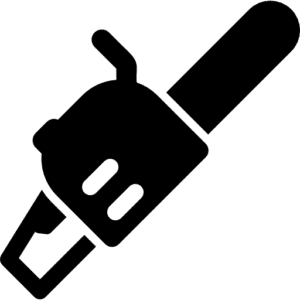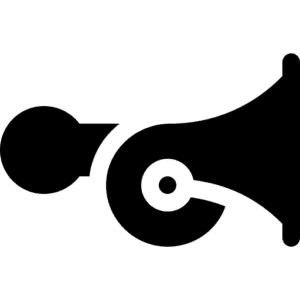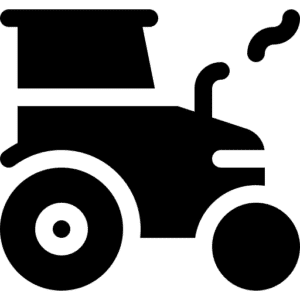Noise Exposure
Small differences in noise exposure make big differences in safety:
With noise exposure, there are two factors which determine whether noise is harmful or considered to be safe. The first is the level of the sound and the second is how long the noise exposure goes on for. read more >>
The Control of Noise at Work Act 2005 – Section 4 defines 85dB as a “Upper exposure action value” so that is the point at which noise levels alone start to become dangerous although noise exposure at that level for short periods of time would not be harmful.
As a guideline, if you need to raise your voice to be heard the noise level is likely to be excessive. An employer is obliged to provide hearing protection once the noise level exceeds 85dB.
Noise levels:
The level of noise is the first factor that determines whether it puts you at risk. Below is a chart showing typical noise levels for a range of activities:
140dB is as loud as...
 |
The sounds associated with jet planes or rock concerts measure between 120 and 140 decibels. |
Any sound above 85 decibels has the potential to cause hearing damage, especially with frequent or prolonged exposure. Wearing ear protection and limiting exposure to loud sounds is the best way to protect against noise-induced hearing loss.
120dB is as loud as...
 |
The sounds associated with industrial machinery, such equipment as chainsaws are 110dB to 120dB. |
Electric saws are usually much lower in sound, But for the most part, chainsaws run at approximately 120 decibels at their loudest, which is 32 times louder than a conversation and can cause long term hearing loss with constant exposure.
110dB is as loud as...
 |
The sounds associated with a car horns are 110dB. |
Any sound above 85 decibels has the potential to cause hearing damage, especially with frequent or prolonged exposure. Wearing ear protection and limiting exposure to loud sounds is the best way to protect against noise-induced hearing loss.
100dB is as loud as...
 |
The sounds associated with factory machinery measure 100 decibels. |
Any sound above 85 decibels has the potential to cause hearing damage, especially with frequent or prolonged exposure. Wearing ear protection and limiting exposure to loud sounds is the best way to protect against noise-induced hearing loss.
90dB is as loud as...
 |
The sounds associated with Tractors measures 90dB |
Any sound above 85 decibels has the potential to cause hearing damage, especially with frequent or prolonged exposure. Wearing ear protection and limiting exposure to loud sounds is the best way to protect against noise-induced hearing loss.
80dB is as loud as...
 |
The sound of a phone ringing is 80 decibels. |
Any sound above 85 decibels has the potential to cause hearing damage, especially with frequent or prolonged exposure. Wearing ear protection and limiting exposure to loud sounds is the best way to protect against noise-induced hearing loss.
70dB is as loud as...
 |
The sounds associated with coffee grinder measure between 70 and 80 decibels. |
Any sound above 85 decibels has the potential to cause hearing damage, especially with frequent or prolonged exposure. Wearing ear protection and limiting exposure to loud sounds is the best way to protect against noise-induced hearing loss.
Exposure time
The amount of time spent in a noisy environment is the other major factor in whether it is dangerous or not. Noise is described in terms of a decibel scale. In simple terms, the amount of sound doubles every 6dB and is subjectively twice as loud with every 10dB increase. Consequently, every 3db increase in sound level halves the amount of time that exposure to that level is safe.
That also means every 3dB extra protection doubles the amount of time exposure to a level is safe.
Maximum exposure time in 24 hours:
- @ 85dB 100%
8 hours
- @ 88dB 50%
4 hours
- @ 91dB 25%
2 hours
- @ 94dB 12.5%
1 hours
- @ 97dB 7.5%
30 mins
- @ 100dB 3.75%
15 mins
- @ 103dB 1.8%
7 min, 30 sec
- @ 106dB 0.9%
3 mins, 45 secs
- @ 109dB 0.45%
112 seconds
- @ 112dB 0.22%
56 seconds
- @ 115dB 0.05%
28 seconds
If your earplugs are provided by your employer, they should be able to advise you of the level of noise you work in which will give you the information you need to work out how much protection your earplugs need to deliver to keep you safe, click here
If a person’s work involves using a pneumatic drill or they ride a motorbike which creates 106dB of sound, then the chart above confirms it is only safe to work/ride for 3 minutes 45 seconds in a 24-hour period with no hearing protection.
The chart below takes that value and shows that hearing protection that delivers a PAR of 21 translates to 8 hours safe working time.
The test will provide you with an accurate PAR. Using poorly performing hearing protection could seriously damage your long-term health.
The most recent PPE (Personal Protective Equipment) Directive, click here reclassified harmful noise as Category 3 alongside risk of drowning, electrocution, bullet, and knife wounds. Noise damage causes Noise Induced Hearing Loss and is seriously damaging to health.
You owe it to yourself to find out if your hearing protection is fit-for-purpose.